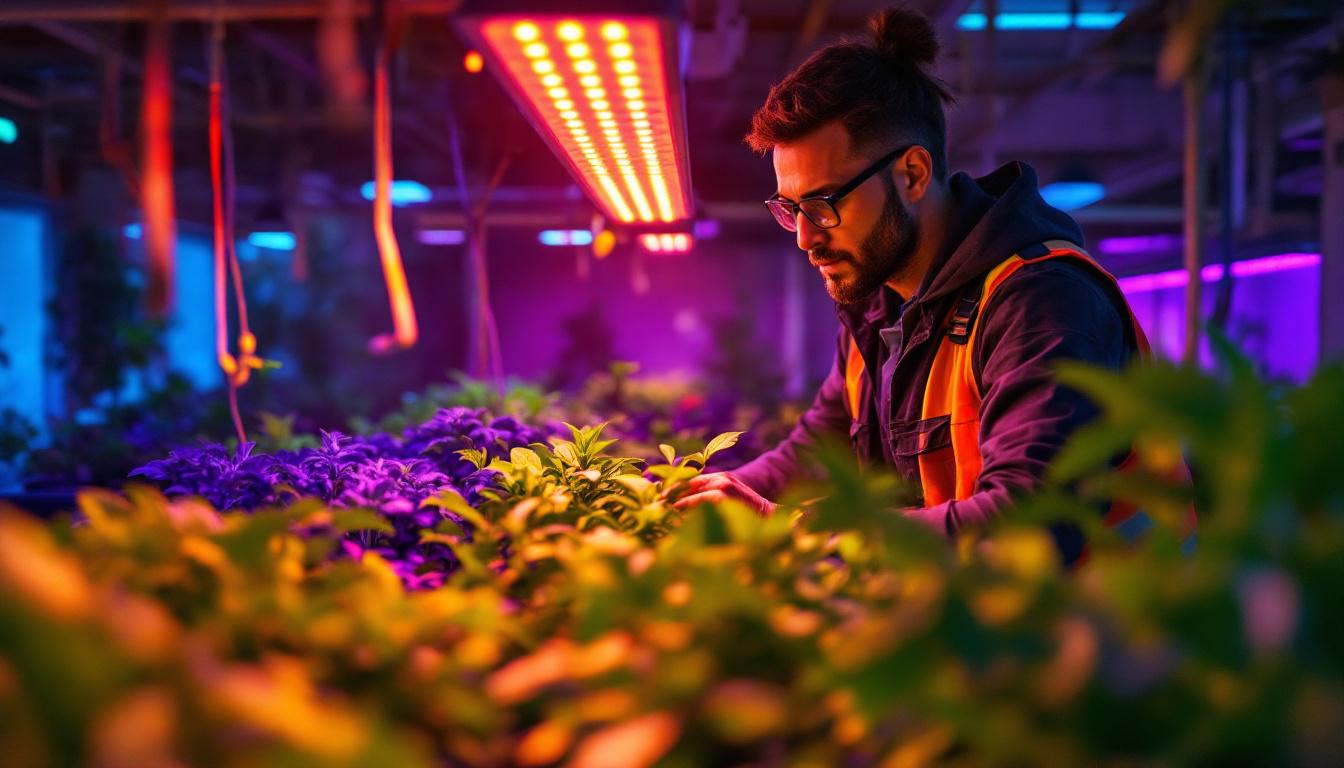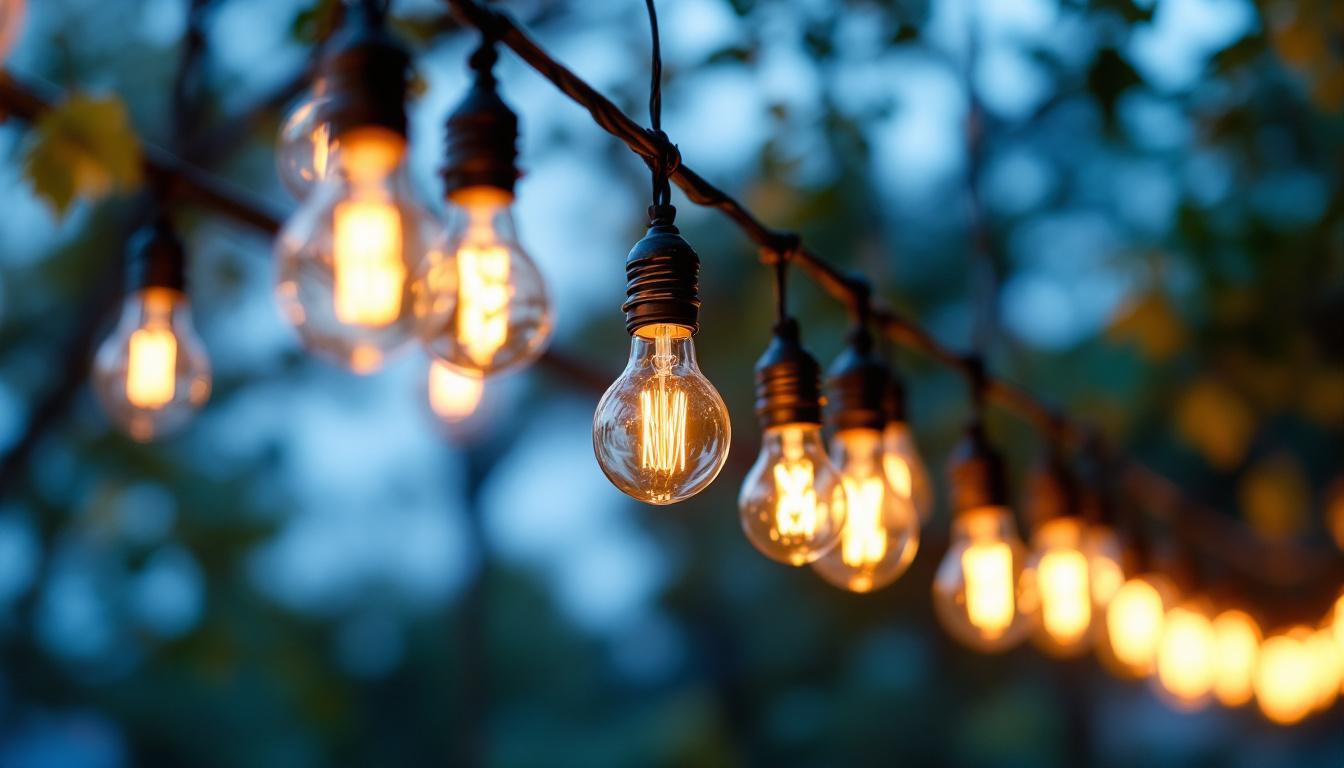
In recent years, the horticultural industry has witnessed a significant transformation due to advancements in lighting technology. Among these innovations, LED grow lights have emerged as a leading solution for indoor gardening and commercial agriculture. These lights not only provide the necessary spectrum for plant growth but also offer numerous benefits that can save lighting contractors both time and money.
As the demand for sustainable and efficient growing practices increases, understanding the advantages of LED technology becomes essential for lighting contractors. This article delves into how LED lights for growing plants can streamline operations, reduce costs, and enhance overall productivity in the horticultural sector.
One of the standout features of LED grow lights is their energy efficiency. Unlike traditional incandescent or fluorescent lights, LEDs convert a higher percentage of electricity into usable light for plants, resulting in lower energy bills and a reduced carbon footprint. This efficiency not only benefits the environment but also allows growers to allocate their resources more effectively, investing savings into other critical areas of their operations, such as pest management or nutrient delivery systems. Moreover, the longevity of LED lights—often lasting up to 50,000 hours—means fewer replacements and less waste, contributing to a more sustainable growing environment.
Additionally, LED grow lights are versatile and customizable, catering to the specific needs of various plants at different growth stages. With the ability to adjust light spectrums, growers can optimize conditions for germination, flowering, and fruiting, ultimately leading to healthier plants and higher yields. This adaptability is particularly beneficial in commercial settings where multiple crops may be cultivated simultaneously. Furthermore, the compact design of LED fixtures allows for flexible installation options, making it easier for growers to maximize space in their facilities, whether they are operating a small urban garden or a large-scale greenhouse.
One of the most significant advantages of LED grow lights is their energy efficiency. Unlike traditional lighting systems, such as incandescent or fluorescent bulbs, LEDs consume considerably less power while delivering the same or even superior light output. This reduction in energy consumption translates to lower electricity bills, making it an attractive option for both contractors and their clients.
Moreover, the longevity of LED lights means that they require less frequent replacement. With a lifespan often exceeding 50,000 hours, contractors can save on maintenance costs and minimize downtime for their clients, ensuring a more efficient operation.
Plants require different light wavelengths for various stages of growth, from germination to flowering. LED grow lights offer the flexibility of customizable light spectrums, allowing contractors to tailor the lighting conditions to the specific needs of different plants. This adaptability not only promotes healthier plant growth but also maximizes yield potential.
By utilizing full-spectrum LED lights, contractors can provide a balanced light environment that mimics natural sunlight, thereby enhancing photosynthesis and overall plant health. This capability can lead to faster growth rates and improved crop quality, which is a significant selling point for contractors looking to attract clients in the agricultural sector.
Another critical benefit of LED grow lights is their low heat output. Traditional lighting systems often generate excessive heat, which can lead to increased cooling costs and potential damage to plants. In contrast, LEDs operate at much lower temperatures, reducing the need for additional cooling systems and creating a more stable growing environment.
This characteristic not only saves energy but also allows for closer placement of lights to plants, further enhancing light absorption. By minimizing heat stress on plants, contractors can ensure healthier growth and reduce the risk of crop loss due to overheating.
When it comes to installation, LED grow lights can be more cost-effective than traditional lighting systems. Their lightweight design and compact size make them easier to install, reducing labor costs for contractors. Additionally, the versatility of LED fixtures allows for various installation configurations, accommodating different grow spaces and layouts.
Contractors can also take advantage of the growing trend towards automated lighting systems. Many LED grow lights can be integrated with smart technology, allowing for remote control and scheduling. This feature not only enhances convenience but also optimizes energy usage, further driving down costs.
Investing in LED technology may require a higher upfront cost compared to traditional lighting options. However, the long-term financial benefits far outweigh this initial expense. The reduced energy consumption, longer lifespan, and lower maintenance requirements of LED grow lights result in substantial savings over time.
Furthermore, as more growers recognize the advantages of LED technology, the demand for these systems is expected to rise. By positioning themselves as experts in LED installations, contractors can tap into a growing market, potentially increasing their client base and revenue streams.
Ultimately, the goal of any lighting contractor is to deliver value to their clients. By offering LED grow lights, contractors can provide solutions that not only meet the lighting needs of their clients but also contribute to their overall success. Healthier plants, higher yields, and reduced operational costs lead to satisfied customers who are likely to refer others and return for future projects.
Moreover, as sustainability becomes a priority for many businesses, contractors who embrace LED technology can position themselves as environmentally conscious partners. This alignment with eco-friendly practices can enhance a contractor’s reputation and attract clients who prioritize sustainability in their operations.
In commercial greenhouse settings, LED grow lights can be particularly beneficial. These environments often require precise control over light conditions to optimize plant growth and productivity. By integrating LED technology, contractors can create customized lighting solutions that cater to the specific needs of various crops.
Additionally, the energy savings associated with LED lights can significantly impact the profitability of greenhouse operations. With reduced electricity costs and increased yields, greenhouse owners are more likely to see a return on their investment, making it a win-win for both contractors and clients.
Indoor farming has gained popularity as urban agriculture continues to rise. In these settings, the ability to control every aspect of the growing environment is crucial. LED grow lights provide the flexibility needed to create optimal conditions for plant growth, regardless of external weather conditions.
Contractors can design systems that incorporate various light spectrums and intensities, allowing for year-round production. This capability not only meets the demands of consumers for fresh produce but also positions contractors as leaders in the indoor farming market.
As more individuals take up gardening as a hobby, the demand for effective lighting solutions in residential settings is increasing. LED grow lights are ideal for home gardeners looking to cultivate plants indoors, whether for aesthetic purposes or food production.
By offering LED solutions to residential clients, contractors can tap into a growing market of hobbyists and enthusiasts. Educating homeowners on the benefits of LED technology can lead to increased sales and a loyal customer base. Additionally, the compact nature of LED lights allows for easy integration into any home environment, making them an appealing option for residential gardening.
One of the most common misconceptions about LED grow lights is the perception of high initial costs. While it is true that LEDs can be more expensive upfront compared to traditional lighting options, the long-term savings in energy and maintenance costs often justify the investment.
Lighting contractors can educate their clients on the total cost of ownership, highlighting how the efficiency and longevity of LED lights can lead to significant savings over time. By presenting a clear cost-benefit analysis, contractors can alleviate concerns and encourage clients to make the switch to LED technology.
Another misconception is that LED grow lights are less effective than traditional lighting systems. However, numerous studies have shown that LEDs can provide equal or superior light quality for plant growth. The ability to customize the light spectrum allows for targeted growth, making LEDs a powerful tool in horticulture.
Contractors can share success stories and case studies from satisfied clients who have transitioned to LED technology. Demonstrating the tangible benefits of LEDs can help dispel doubts and encourage more growers to adopt this innovative lighting solution.
As the horticultural industry continues to evolve, the role of lighting contractors will be crucial in guiding growers towards sustainable and efficient practices. LED grow lights represent a significant advancement in lighting technology, offering numerous benefits that can save time and money for both contractors and their clients.
By embracing LED technology, contractors can position themselves as leaders in the industry, providing innovative solutions that meet the growing demands of modern agriculture. The transition to LED lights not only enhances plant growth and productivity but also contributes to a more sustainable future for the horticultural sector.
In conclusion, the adoption of LED grow lights is not just a trend; it is a necessary evolution in the way plants are cultivated. Lighting contractors who recognize this shift and invest in LED technology will undoubtedly reap the rewards in terms of cost savings, client satisfaction, and market competitiveness.
Ready to harness the cost-saving power of LED grow lights for your next horticultural project? Look no further than LumenWholesale. We provide lighting contractors with top-notch, spec-grade LED grow lights at unbeatable wholesale prices. By cutting out the middleman, we ensure you get the most value for your investment. Our extensive selection not only meets but exceeds industry standards, guaranteeing reliable and high-performance lighting for all your needs. Plus, with free shipping on bulk orders, you can stock up on premium lighting solutions without worrying about hidden fees or compromises. Elevate your lighting game and experience the perfect blend of quality, affordability, and convenience at LumenWholesale – Wholesale Lighting at the Best Value.

Discover how embracing Type Led technology can revolutionize your approach to securing lighting contracts.

Discover how T8 4Ft LED bulbs are revolutionizing the lighting industry with their energy efficiency, longevity, and superior illumination.

Discover the essential guide to understanding ballasts in lighting systems.

Discover the importance of outdoor hanging bulbs for lighting contractors, enhancing safety, aesthetics, and efficiency.